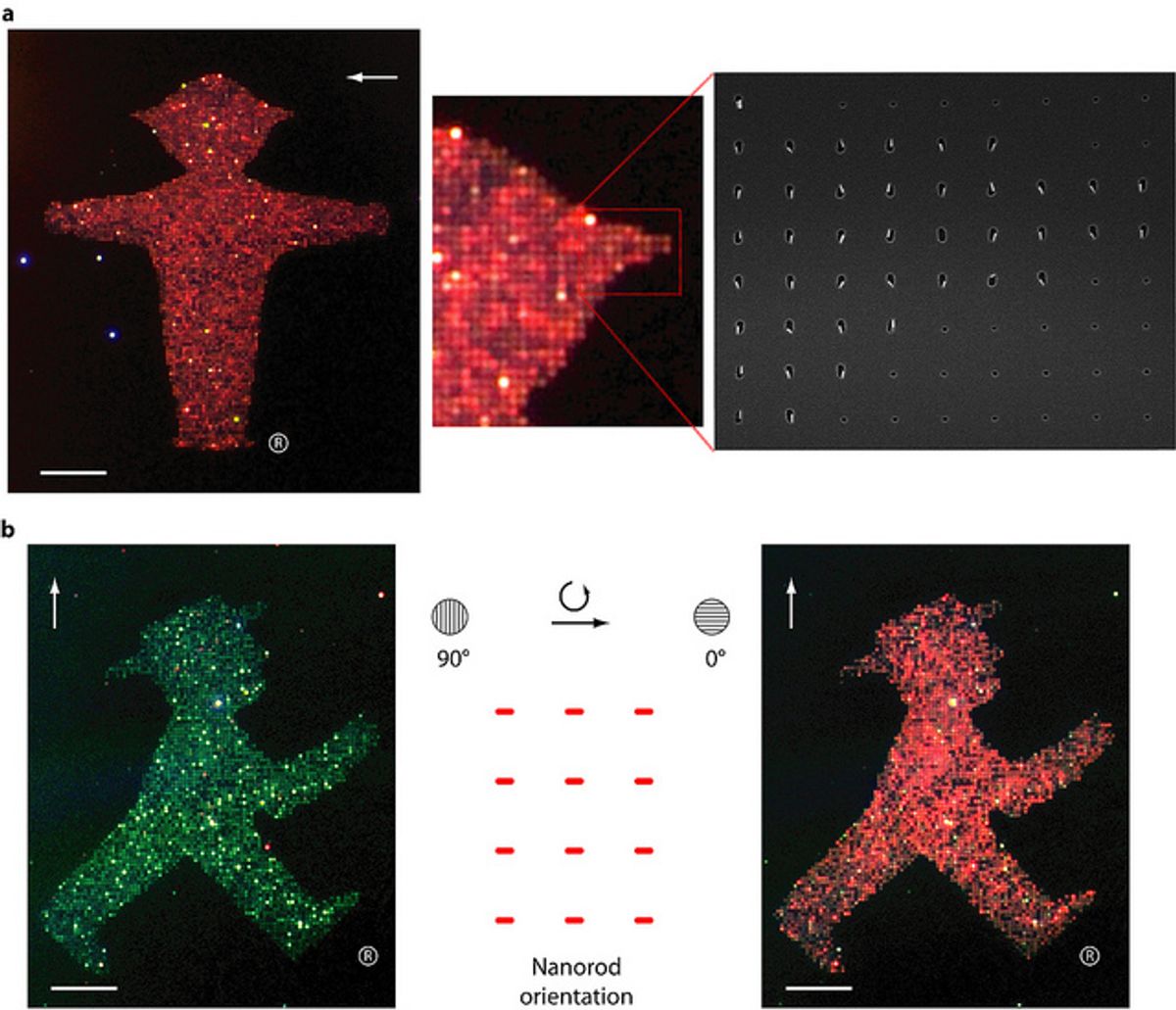Earlier this year, researchers at IBM Zurich developed a process in which they used the surface tension of water to manipulate gold nanorods and arrange them into specific patterns.
While that was a nifty demonstration, it didn’t reveal commercial applications. Now, however, the research team led by Dr. Heiko Wolf believes that the technique could be used in anti-counterfeiting efforts.
"In addition to using nanorods, we can also create patterns using florescent spheres which emit red, green and blue,” says Heiko in an IBM press release. “What makes this particularly interesting is that they add another level of security, in that the order of the colors in which they arrange themselves is completely random. So not even I could replicate the pattern. We call it a physically uncloanable function or PUF."
Heiko further describes the technology and its anti-counterfeiting capabilities in the video below:
While I can understand the IBM research team’s enthusiasm for their newly-found application possibilities, there are a couple of issues that may limit commercialization.
The IBM press release presents this work as a first for anti-counterfeiting with nanotechnology, but there are already existing techniques with similar applications. SingularID, (now part of Bilcare Research) use nanomagnets to create a suite of tools that can be used for detecting counterfeits. The patterns generated with Bilcare’s technique are also completely random and can’t be reproduced. What makes that technology stand out is that it’s not just a material but an entire product that can be bought to combat counterfeiting. There's always room for another player in the market, but IBM will have to prove that their method has additional advantages.
Secondly, when I heard Heiko explain, “All you need is an optical microscope to see the pattern,” I immediately thought that it sounded impractical. While a nanoscientist might think analyzing a product with an optical microscope is no big deal, it’s hard to picture a port authority official sitting down with one to check and see if the Swiss watches are what they claim to be.
The IBM Zurich team have found a very good way to create nanopatterns with nanoparticles using a directed self-assembly technique, but it may still be in search of a worthy application outside of anti-counterfeiting.
Dexter Johnson is a contributing editor at IEEE Spectrum, with a focus on nanotechnology.




